The blue sea of \u200b\u200bflowers, the air flower cloud, unsurpassed carpets made of small and gentle colors are only part of the bright epithets that can be described with Lobelia.
This plant can rightly be called one of the most desirable guests on the site. Lobelia his magnificent and gentle cloud makes landscape design bright, unique and spectacular. Many gardeners do not know the true beauty of Lobelia, so do not take care of its cultivation. However, this flower costs all efforts and costs on your part, as in consequence you will get a whole colorful firework that shoots blue, blue, white, red colors from June to September.
In this article, we will look more detailed features and description of the labelia, as well as note all the characteristics of common species and varieties of this beautiful flower. We will tell more in detail about the main nuances of agrotechnics of growing lobelia on their plot or balcony.
Features and Description Lobelia
Lobelia is a long-term shrub, a semi-staple or grassy plant of a family of bells, which in our territory is most often grown as annual. The natural area of \u200b\u200bhabitat Lobelia is the territory of subtropics and part of the temperate zone. These beautiful and gentle plants can be found almost all over the world. The homeland of this plant can be considered South Africa, it is in these territories it grows on wet and stony cliffs.
In total, there are about 300 types of lobelia in the world, but only 20 is used in culture. This flower was named after the Dutch botany Mattias L Golovia, who at one time he was heading the royal botanical garden.
Lobelia Description:
- Lobelia can be a herbaceous plant, shrub, half ward, a small tree.
- All label flowers are perennial, but the cultivation of both annuals is possible in Russia.
- In nature there are deciduous and evergreen plants.
- The form of Lobelia resembles a ball-shaped bush, which can be in height to reach from 20 cm to 150 cm in rare cases.
- The stalks of this plant are very subtle and branching, there are also a reprehension. Branching branches are characteristic of ampel forms of Lobelia.
- Little label leaves, luncular, green. Located on the stems are still very thick. Length can reach from 3 to 8 cm.
- The root system is urine.
- In the sinuses of the leaves bloom in one inflorescence.
- Flowers Lobelia in shape resemble bells. The color scheme is different: white, blue, blue, purple, purple, red. Sometimes there are varieties of lobelia two-color painting, in which the eye has a contrasting color.
- Flowers Lobelia from June to September very abundant, since on bush all the flowers are blocked almost simultaneously.
- In the fall, fruits appear on the place of colors - seed boxes that contain a large number of small seeds.
- Lobelia seeds retain the germination for 3 years.
- These flowers differ inconspicuous to light and are sufficient to land and care.
Annual species and varieties of lobelia
In the line of species of Lobelia, there are only perennial plants, but in our climatic conditions it is possible to use some as annuals. Let us consider in more detail the features of annual and perennial species of lobelia, as well as the most common varieties of this culture.
On the territory of Russia, the grades of one of the most popular species of this plant are most often grown - Lobelia Erinus.
Lobelia Erinus
- This species has a few more names: border label, Lobelia is black and believed. Sometimes Lobelia Erinus is called Sadovaya, as it is representatives of this kind that most popular in our climatic belt.
- South Africa is considered a natural habitat of garden lobelia. In Europe, cultivate it from 1752.
- It is a compact herbaceous plant, which in height can reach 10-40 cm depending on the variety.
- Stems thin and branching.
- This plant can be spherical bushes, compact pillows or cascade flowers.
- Little flowers, only 2-3 cm in diameter. There can be different colors: white, blue, purple, carmine, pink, meet two-color.
Lobelia Erinus is represented by five forms:
- Lobelia compact. It is distinguished by straight, and non-fluttering shoots, which in height can reach 10-15 cm.
- Lobelia stretched. The plant bush is formed long, up to 25-30 cm, branches, while the height of the bush itself is only 10-15 cm.
- Lobelia dwarf. This form is characterized by the lowest plants. Height Kistica reaches only 10-12 cm.
- Lobelia is represented. This labelia is formed by high reprehensive shoots. It has a bush colonum shape, a height reaching 20-25 cm.
- Lobelia ampelnaya. A bush is formed by branching shoots up to 40 cm long.
Among the gardeners, the first first forms were made to call the bushes, and the last - ampel.
Lobelia is strong
This is another kind of annual lobelia grown in a temperate climate.
- Differs in rather thick and powerful stems.
- The shape of the bush reminds compact Lobelia Erinus.
- Leaves are quite large, rich green.
- Flowers have blue or magenta color.
Lobelia the finest
- This type of lobelia has an elegant appearance and is formed by subtle shoots that reach a height of 20-25 cm.
- Flowers are large in comparison with the shared size of the bush. The approximate diameter of one flower can reach 2 cm.
- On coloring, flowers can be white, blue or lilac.
Popular Lobelia Sports One-Year
- Grade "Crystal Palace". It is a tight and compact bush, which in height can reach 15-20 cm. Flowers blue or purple flowers, which are blooming at the same time.
- Grade "Kaiser Willhelm". A small bush that creates very well. Flowers bright blue flowers.
- Sort "White Palace". Compact bush tall up to 12 cm. Flowers white flowers.
- Grade "Riviera Blue Splash". Differs unusual colorful colors - white little flowers with blue spur.
- Sapphire grade. This is an ampel grade of lobelia, which is characterized by hanging branchy shoots. Flowers bright blue flowers with a small white spot in the center.
- Grade "Red Cascade". Plant with branchy hanging shoots up to 35 cm long. Flowers with rapid pink flowers.
Perennial species and varieties of lobelia
These species include labels, differ in larger and bright inflorescences. These flowers are not very popular among gardeners, however, they find their fans who grow them on the shores artificial reservoirs.
Lobelia is beautiful
This type of culture is grown as an annual and perennial in our climatic conditions. Lobelia is beautiful is a bush tall up to 60-90 cm. The entire bush is very thickly covered with large flowers. Which in diameter can deliver 3 cm. Flowers of this type of Lobelia have bright shades and an unusual form.
Lobelia Fire or Brilliant
This species can also be attributed to many years of flowering plants. Lobelia Fireless is a rather high plant that can grow up to 75 cm, and some varieties reach 1.5 m. The leaves of this lobelia can be two shades, green or red, it all depends on a particular variety. This culture blooms with red flowers, which are collected in cooled inflorescences.
Popular varieties:
- Grade "Queen Victoria". The most striking representative of this type of Lobelia. Very high plant that can grow by 1.5 m in height. Bright red shade flowers.
Lobelia Dortman
Lobelia Dortman is a guarded view, which is listed in the Red Book. It grows this plant in nature mainly at a depth of 80-90 cm on the sandy coast. Flowers can be of a different shade: white, blue or red. All colors of small size.
Lobelia Purple or Cardinal
The bush of this plant is formed by reprehensive stems, which are 100 cm in height. This label is characterized by the fact that it is most often planted in coastal zones of water bodies or ponds, as well as in water. When landing in water over time, Lobelia purple comes out of the water and blooms. Lobelia flowers purple bright red flowers, which are collected in cooled inflorescences. The name of this flower was given precisely for the color of the inflorescence, which the queen Henrietta resembled the color of the stocking of Cardinal Richelieu.
Lobelia Gerardi
This type of lobelia is characterized by a good winter hardiness, which can withstand strong frosts up to minus 29 degrees. The plant grows at an altitude of more than one meter. Middle-sized flowers, the most popular is a purple shade, which is characterized by a common variety of "Vedraribensis". Flowers are collected in cooled inflorescences.
Lobelia blue
This type of lobelia has another name - syphilic. The natural habitat of this species is the territory of America. A bush is formed by reprehensive branches, height can reach a meter height. Blue flowers, purple, which are assembled in sufficiently dense corrosion-shaped inflorescences. The name of this type of Lobelia was given from the word "syphilis", since in the past, people believed that this plant helps to cure this disease. But over time I had to make sure that this is an erroneous opinion, but the name for Lobelia remains.
Login breeding
All types of lobelia in moderate climate are grown as annual plants. For breeding of these beautiful and gentle colors, seed reproduction is most often used, but for some species it is acceptable to division of bushes and shilling. Let us consider in more detail the features of each method of growing lobelia.
Growing Lobelia from Seeds
The easiest way to grow on its plot this plant is the use of Lobelia seeds as a landing material. In addition, it is recommended to apply a seaside method for breeding this culture. So you will get more chances to grow a healthy and sturdy flowering plant, as the label flower blooms only after 8-10 weeks after landing.
The process of sowing seeds and growing seedlings:
- Lobelia seeds are very small, so it is necessary to use a wet toothpick for their uniform sowing to the ground. With it, carefully carry the number of seeds you need.
- Sewing the seeds of Lobelia to seedlings are best at the end of February, but you can do it up to April.
- Next, you need to prepare special containers for sowing seeds. As such containers, special cassettes for siphelia, peat pills and ordinary shallow boxes can be used.
- Lobelia prefers to grow on loose and light soils, so in no case cannot be added humid. It is best to purchase a special soil mixture for growing seedlings of flowering plants. It can be bought in horticulture-oriented shops and flower growing.
- It is important that the soil consisted of a small amount of river sand and coconut fiber.
- If you are determined with the soil for sowing, it is time to start filling the containers. At the bottom of everyone, be sure to place a layer of drainage from small stones or broken clay, you can use a bark.
- Next, pour the soil mixture and well seal its hands.
- The next stage will be abundant watering soil. You can also shed the prepared soil with a solution of manganese-making for disinfection.
- Seeds can not be close, but simply distribute over the surface and cover with a film or glass.
- Next, you will need to keep sowing daily and observe the temperature of 20-21 degrees of heat. Under such conditions, the first shoots will seem to seek about 7-10 days.
- The shelter from the film or glass must be removed gradually.
- After the appearance of a couple of leaves on seedlings and achieve a height of 3-4 cm, they can be seen in separate containers. By time it must be done about two months after sowing.
- Picking seedlings are best for several pieces - approximately 3-4.
- In the future, the seedlings need to provide regular and moderate watering, as well as a suitable temperature regime - 16-18 degrees.
Pencornia reproduction
- This method is used if you want to be confident that the future plant fully inherits maternal signs.
- To do this, in the winter it is necessary to dig up the strongest and healthy perennial bushes of lobelia and transplant them in pots.
- All pots need to be put in a cool greenhouse or the windowsill in the apartment.
- All winter provide flowers with due water and ventilating.
- With the onset of spring from lobelia bushes, it is necessary to cut a cutlery with a length of 8-10 cm, which can be placed in a container before boarding the container.
- Looking out the cuttings is in separate plastic cups.
Reproduction of the division of the bush
This method is not so common, but is also sometimes used for labeling. Conduct the division of bushes in the spring when the first processes will appear on bushes. To do this, it is necessary to neatly dig up a healthy bush of the plant and divide it into several parts. After that, pick up young seedlings in the prepared landing pit.
Stages of preparation before landing Lobelia
Beautiful and healthy lobeli bushes on your site are the result of the right and competent landing, as well as thorough preparation. It is important to decide on the type and variety of lobelia, get high-quality and healthy seedlings, and also consider the garden composition that suitable you.
Stage 1. Selectors Lobelia seedlings
If you do not want to mess with Lobelian seeds and grow seedlings yourself, then you can easily purchase seedlings you need in specialized nurseries. Before buying, be sure to learn all the features of the selected view and grade of Lobelia in consultants. It is important to know when the seedlings were planted and as they cared for them. Lobelia seedling does not endure too dry air and requires enough watering. Therefore, before purchasing, be sure to check the soil, it must be moistened.
If flowers already bloomed at seedlings, do not be afraid - it is quite normal. The fallout of blooming lobelia seedlings to open ground is allowed. The main thing is that the appearance of the plant is healthy.
Stage 2. Selection of Places for Landing
Lobelia prefers to grow on solar and open places, sections are also suitable in a small half. However, it is not worth landing this bright and beautiful plant at a fully shaded place. In this case, you are unlikely to see Lobelia in bloom.
It is also important to choose the right place in the already existing garden composition for landing. The lowest varieties are perfect for the framing of garden tracks and borders, as well as for disembarking along flower beds. More tall plants will look good together with other colors. The ideal option for decorating your site or house is the use of ampel varieties of lobelia, which plant in porridge, window pots and suspended containers for balconies.
Stage 3. Soil preparation
Lobelia feels great on light and loose sandy or thin soils. It is important that in the soil mixture there is no large number of organic fertilizers, since in that case the plant will grow rapidly, and the bloom can be late and scarce. The site selected by landing is predefined to high up to saturate the soil with oxygen.
Landing Technology Lobelia in Open Soil
- To landing Lobelia to open ground, you need to start approximately at the end of May or beginning of June. It is at this time that the threat of return freezers, which can harm plant seedlings.
- At the selected area of \u200b\u200bthe soil should be well explosion, lightweight, air and is water permeable. It is not necessary to fertilize the earth, as an excess of nutrients, but more specifically nitrogen fertilizers, will only lead to a riveting growth of greenery.
- Next, it is necessary to prepare landing holes, the size of which should be 20-30 cm.
- If you sit down several plants nearby, it is important to observe a sufficient distance between the landing wells. It should be 10-15 cm.
- At the bottom of each pit, it is necessary to place a layer of drainage to prevent moisture stagnation. Keramzite or broken brick can be used as a drainage.
- Next, carefully retake seedlings from the container several pieces at once.
- In each landing pit, it is necessary to place 3-4 pieces of thin seedlings of lobelia.
- Then neatly sprinkle the soil mixture, slightly sealing the surface with hands.
Growing agrotechnics Lobelia: Features and secrets of care
Further beauty and appearance of the plant depends on your Lobelia care throughout the entire period of its growth. Lobelia is unpretentious, however, it requires attention and compliance with some rules of cultivation.
Watering
Lobelia prefers to grow on moderately wet soils. Therefore, it is important to constantly maintain the surface in a constantly wet state, especially in arid periods. In the hot season, it is recommended to water Lobelia to two times a day.
As for the ampel Lobelia, it is necessary to add hydrogel to prevent drying plant to the soil, which delays moisture.
Loosening and weeping
Periodically, the soil around the plants is recommended to loose, since Lobelia prefers to grow on light and saturated with oxygen. You need to loosen not deep and very carefully, so as not to damage the gentle stems. During loosening, it is necessary to carefully remove weeds that may interfere with the full growth of Lobelia.
Podchar
The feeders are an important part of the full care of Lobelia. It is recommended to carry out two or three fertilizer applications for the entire season.
- The first feeder is carried out in before the blooming of flowers. At this time, potash fertilizers contribute. It is possible to close fertilizers during the loosening of the soil, and then rush to water.
- The second and third densecakes of Lobelia are carried out during the remaining period. At this time, complex mineral fertilizers should be made.
Trimming Lobelia
It is very important once for the season to pruning the shoots of Lobelia. Thus, you will extend the flowering of this plant and stimulate the active growth of new shoots. Crop needed at the end of the first period of flowering. A sharp knife or a secateur needs to trim all shoots at an altitude of 5 cm from the surface of the Earth.
Fighting pests and diseases
Lobelia is relatively resistant to the affect of various fungal and viral diseases, as well as to the appearance of pests. For harmonious growth, she needs the right departure that minimizes the risk of various problems.
However, sometimes these gentle flowers may suffer from fungal diseases:
- Rot.
- Puffy dew.
- Rust.
- Spottedness.
With these diseases will help special drugs - fungicides, which are sprayed by plants, according to the instructions.
From pests you can allocate the following:
- Aphid.
- Bugs.
To combat pests there is a huge amount of insecticides that will help protect your plant.
Lobelia Winter
After flowering, many simply remove the remains of the plant and dripped the site. However, this is still a perennial plant, so you can easily extend your life. For this, before the onset of the cold, you carefully dug the label and transfer it to a conventional flower pot. Thus, this beautiful flower will delight you even in winter.
Using Lobelia in Landscape Design
- Lobelia is great for landing in various containers, bans and large pots, thereby creating a unique decor of the site.
- Ampel varieties of lobelia are planted in a porridge and window pots. Also these plants are widely used to decorate balconies.
- Little lobelia can be grown to decorate garden tracks and borders, as well as to create spectacular carpet compositions.
- Perfect for decorating alpine slides, mixboraders.
Stock Foto Lobelia in landscape design
More clearly to see all the features of the use of lobelia in the decoration of the site can be on the presented photos.
Compositions using Lobelia
Growing Lobelia in Pots
Creating carpet compositions with lobelia
Lobelia is a beautiful and gentle plant, which, thanks to its appearance, will certainly decorate any plot, it does not matter what style it is made. You can only need some patience and efforts to grow this incredibly bright flowering plant.

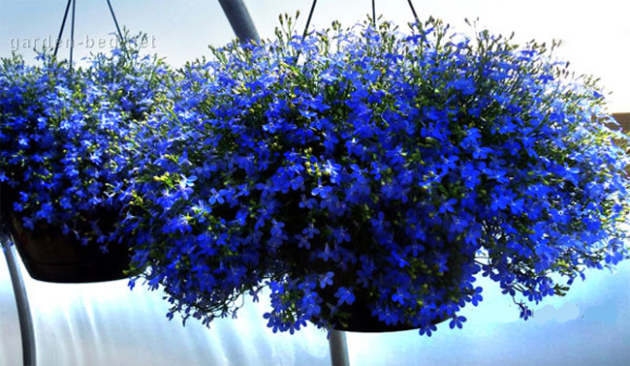


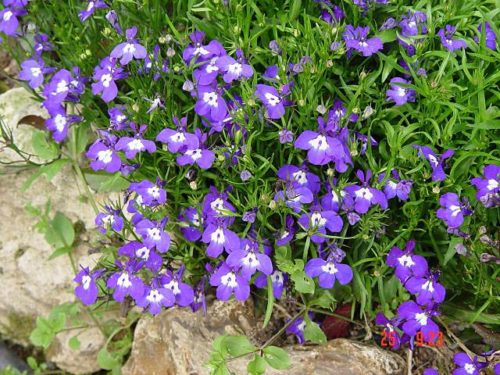
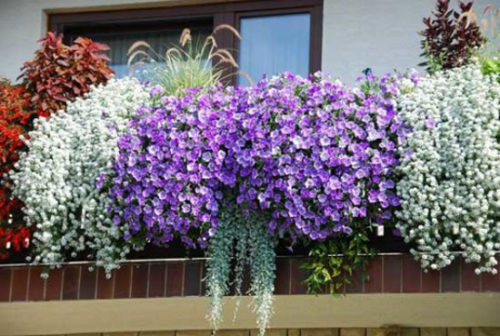

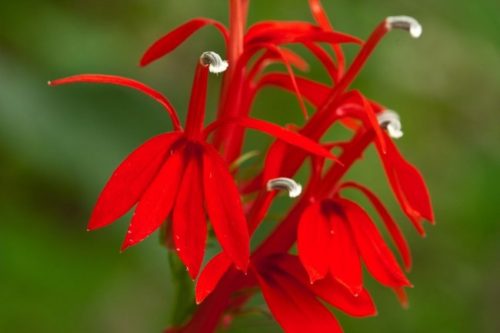
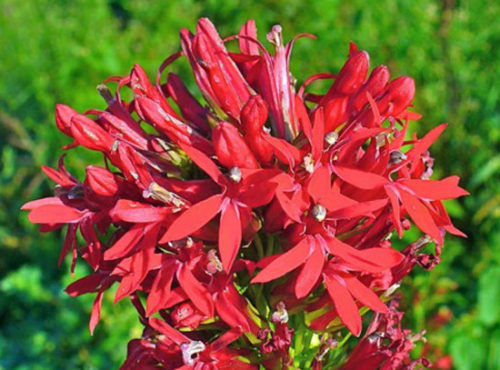
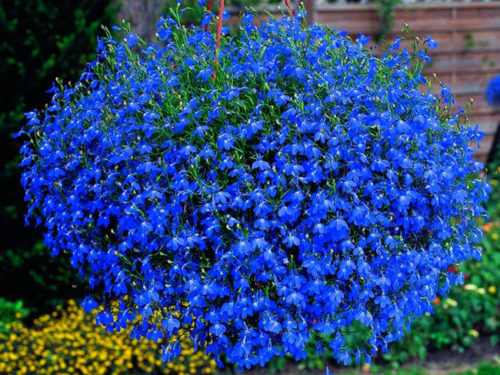
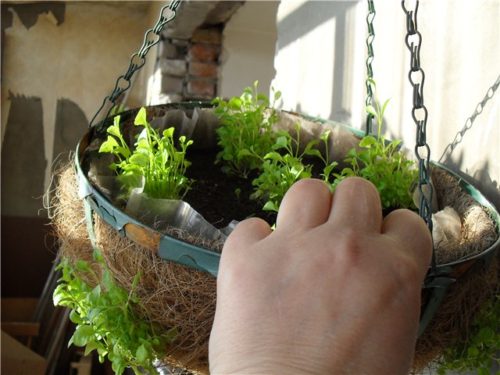
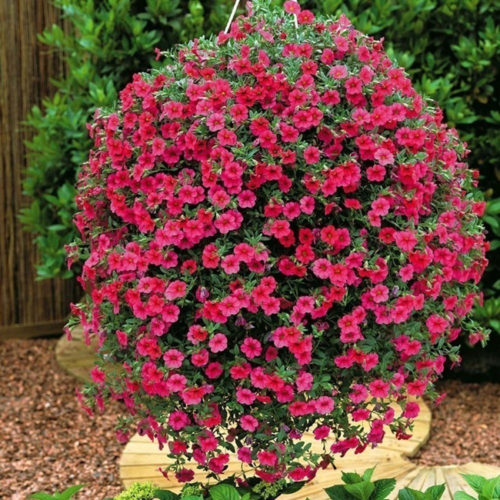
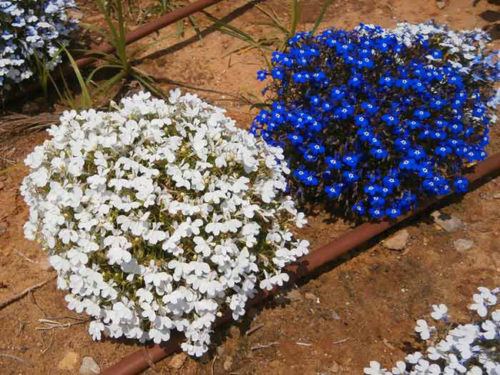
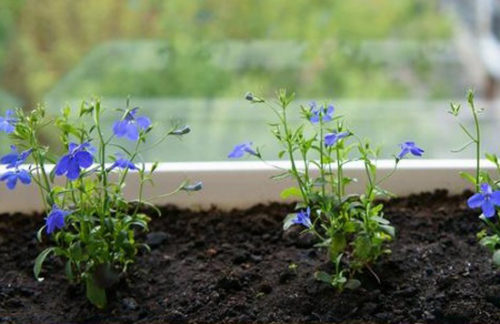
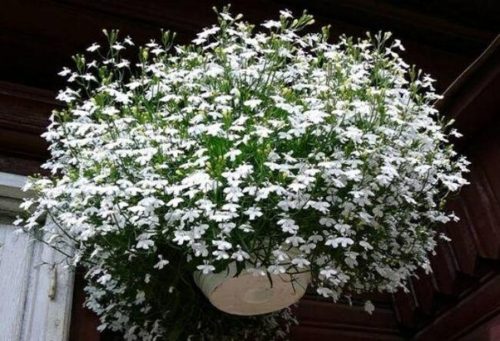
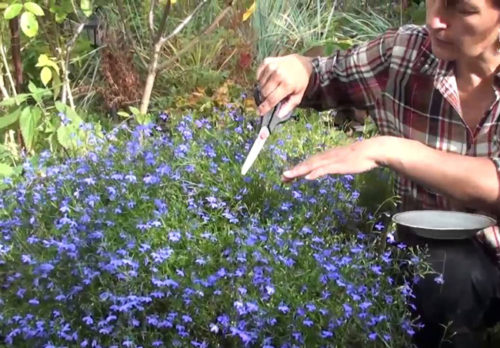
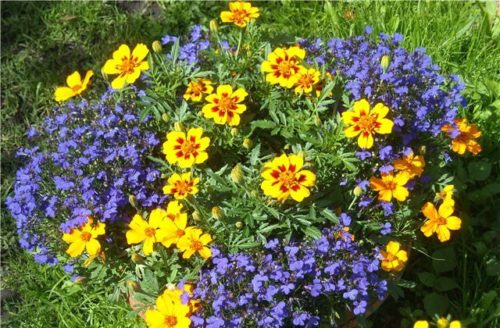
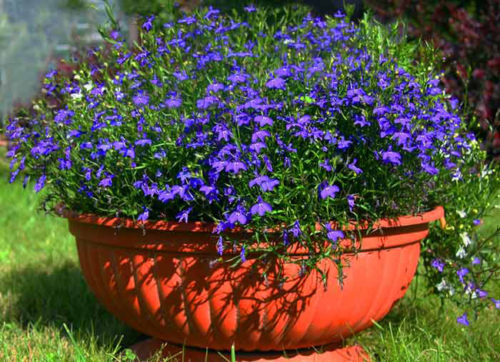
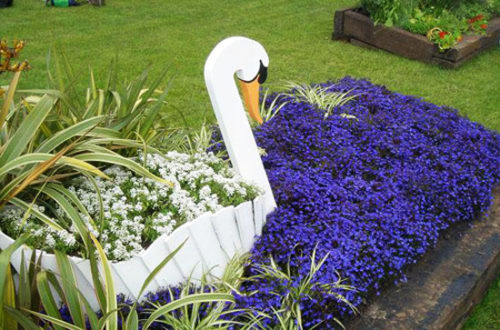












 Start a discussion ...
Start a discussion ...